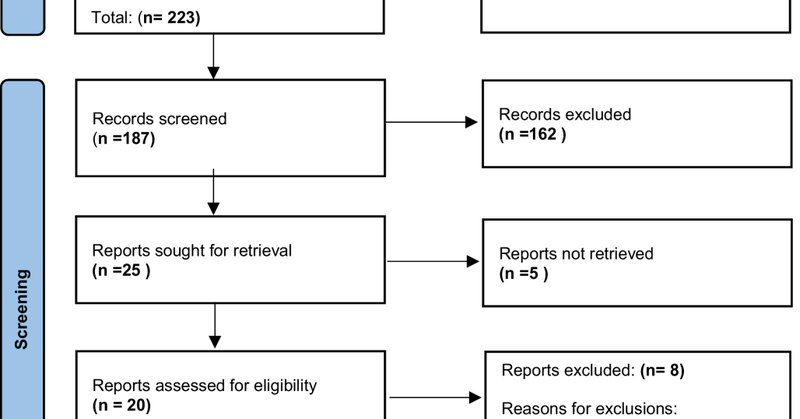
Aaron Besterman
@besterman_a
Followers
437
Following
5K
Media
12
Statuses
1K
Child psychiatry. Psychiatric genetics. Rare neurodevelopmental disease research. Tweets my own. He/His.🇺🇸🇨🇦🇨🇴
San Diego, CA
Joined July 2017
Hablar no es tan simple como parece. Detrás de cada palabra hay una orquesta de genes, conexiones neuronales y aprendizajes que deben sincronizarse con precisión. Un nuevo estudio muestra cuán complejo y diverso es ese proceso en los niños con trastornos del habla y lenguaje
4
20
82
Our new systematic review of the recent literature on ADHD meds in pregnancy published in @AWMH_Journal. TLDR: probably best to stop modafinil if considering pregnancy. Thanks to Sarah Tai for leading this! https://t.co/8bCygGhgfz
link.springer.com
Archives of Women's Mental Health - During pregnancy, it is unclear whether women with attention deficit hyperactivity disorder (ADHD) should stop prescribed medication – risking relapse...
0
2
10
Please RT: We are recruiting a postdoc in statistical genetics for a project in my lab on genes and environment in autism
We are proud to be one of the 13 projects funded by the NIH Autism Data Science Initiative. Our project: "Elucidating the Interplay of Genes and Environment in Autism Using Genomic and Exposure Data from Large Populations" 🧵 https://t.co/7gp6gBNYgn
0
19
27
11/ Gratitude to an amazing collaborative team led by Harman Brah. Pre-proof here: doi:10.1016/j.biopsych.2025.09.010 #Schizophrenia #Genetics #Psychiatry #PrecisionMedicine #MetaAnalysis
0
0
1
10/ For clinicians: consider genetics as part of a precision psychiatry approach—useful for prognosis, medical surveillance, reproductive counseling, and occasionally treatment considerations tied to specific variants (see our table of variants with clinical implications).
1
0
1
9/ What could improve yield over time: comprehensive reporting of both CNVs and SNVs, consistent ACMG/AMP interpretation, and attention to variant classes best captured by GS. As databases mature, VUS reclassification may further increase actionable returns.
1
0
0
8/ Clinical take-home: These data do not constitute a practice guideline, but they can inform diagnostic workups—especially for schizophrenia with NDD features or early onset—and motivate services to build genetics pathways and counseling capacity.
1
0
0
7/ Important caveats: substantial heterogeneity (I²≈96%), inconsistent CNV/SNV reporting across studies, and limited geographic representation (notably few data from Latin America, South Asia, Africa). The field needs better standardization and broader sampling.
1
0
2
6/ Context: The Royal College of Psychiatrists has recommended considering CMA in schizophrenia. Our pooled estimate (~6%) is higher than earlier CNV-only figures, reinforcing that genetic testing can be clinically relevant—but standards and reporting practices matter.
1
0
0
5/ Who benefits most (signal from meta-regression): higher yields in schizophrenia with co-occurring NDD features—especially intellectual disability—and earlier age of onset. These groups could be prioritized when considering clinical genetic testing.
1
0
0
4/ Key result: ~6% pooled diagnostic yield (95% CI 4–7%). By platform: CMA ~6%, ES ~5%, GS ~7%. (Note: confidence intervals overlap; study methods & reporting varied.) This suggests ~1 in 17 patients may receive clinically informative findings.
1
0
0
3/ What we did: Systematic review & random-effects meta-analysis across MEDLINE, EMBASE, and PsycINFO (2007–2023). We pooled platform-specific yields for chromosomal microarray (CMA), exome (ES), and genome sequencing (GS), and ran meta-regressions to probe heterogeneity.
1
0
0
2/ Why this matters: genetic testing is now routine in many neurodevelopmental disorders (ID, ASD, epilepsy), yet adoption in schizophrenia has lagged—due to uncertainty about yield, variable reporting, and limited genetics training in psychiatry. We tackle that evidence gap.
1
0
0
1/ 🚀 New paper out in @BiologicalPsyc1 “Clinical Genetic Testing in Schizophrenia: A Systematic Review and Meta-Analysis.” We synthesize 31 studies to estimate how often clinical genetic testing returns positive results in schizophrenia. doi:10.1016/j.biopsych.2025.09.010
1
0
3
Here's an idea I've been thinking about for years: is the dopaminergic deficit in Parkinson's disease common to other conditions with psychomotor slowing? However, it took 3 students on their summer project to collect the evidence for @Brain1878. https://t.co/FIDI5dSdvL 🧵...
academic.oup.com
Leong et al. propose that psychomotor retardation in disorders such as Parkinson’s disease, catatonia, and depression may share a common mechanism—reduced
3
17
45
🚨 Semaglutide completely prevents metabolic side-effects caused by antipsychotics: Compared to placebo after 30 weeks: » Remission from prediabetes: 81% vs 19% » Weight: -20 lbs » Waist size: -2.4 in. » Psychosis: same Practice changing. Published yesterday @JAMAPsych
21
83
365
12/ SKS & PHTS families who participated Dr. Julian Martinez-Agosto (UCLA) The DSC: @rarediseasesnet → https://t.co/iboPoFAsRG
@PTENFoundation @SmithKingsmore @RareDiseases @rarediseaseuk @rarediseasefdn @autismspeaks @SimonsFdn @AutismINSAR @rarediseasesnet
0
0
1
11/🏁 Takeaway: Sensory profiles may provide a window into genetic pathogenicity across OGIDs, but variant scores alone aren’t robust prognostic tools. Individualized neurobehavioral assessment remains essential for diagnosis, prognosis, and intervention planning.
1
0
0
10/🧩 Clinical classification: Decision tree using behavioral + medical features (e.g., neonatal teeth for PHTS) performed above chance (CV relative error ≈0.67). Behavioral-only tree also above chance, showing the strength of detailed phenotyping.
1
0
0






